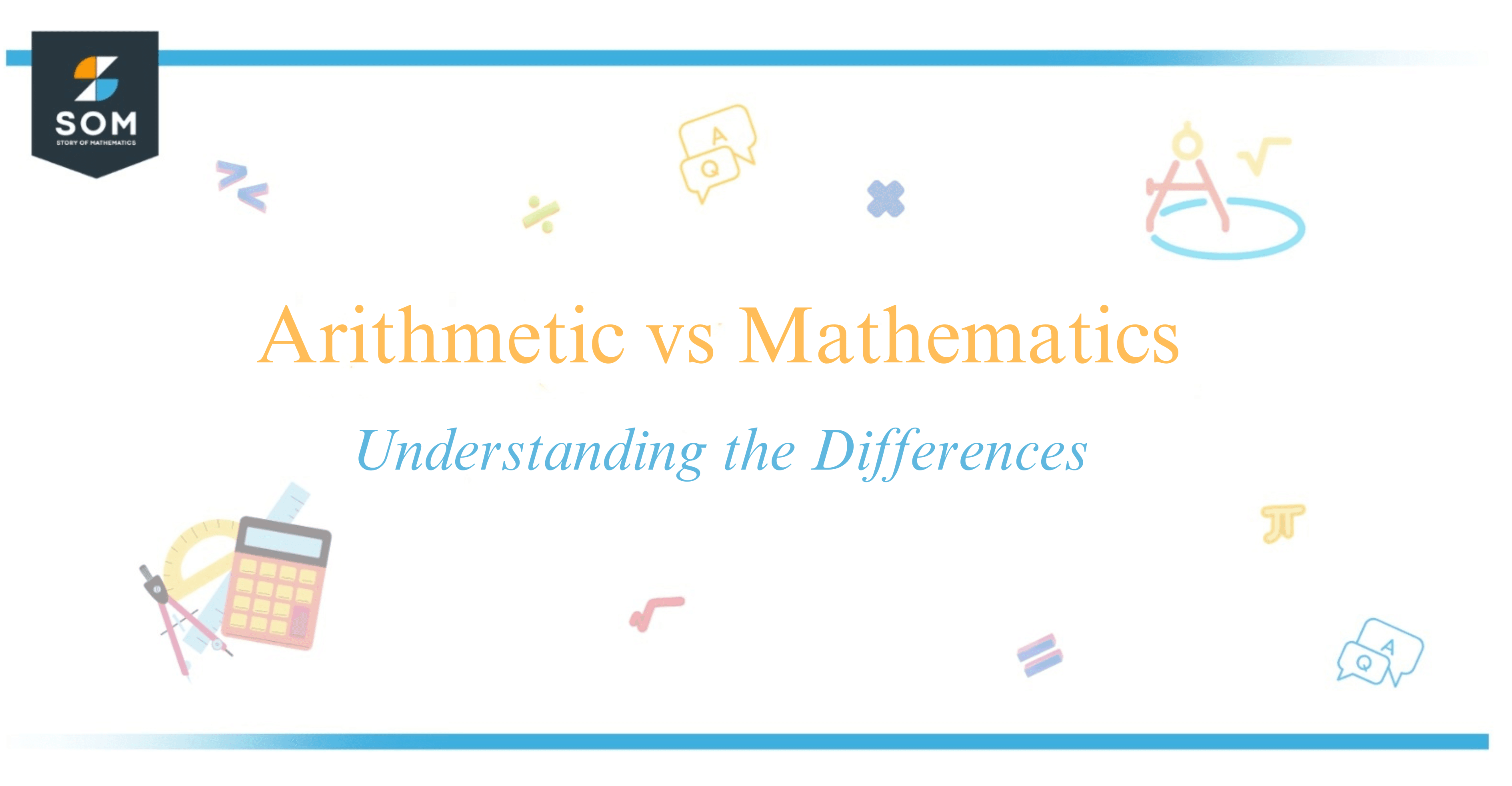
Arithmetic is often seen as the foundation of mathematics, encompassing the basic operations of addition, subtraction, multiplication, and division with numbers.
I understand mathematics as an expansive field that builds upon these fundamentals to explore more advanced concepts such as algebra, calculus, and geometry, delving deeper into the relationships between numbers, shapes, and quantities.
As we unpack arithmetic’s role and distinguish it from the broader mathematical sciences, my curiosity piques at the intricate dance between simplicity and complexity—each discipline proving crucial to the other’s existence.
Main Differences Between Arithmetic and Mathematics
The main differences between arithmetic and mathematics are their scope and applications. Arithmetic is the foundation of mathematics, focusing on basic numerical operations and the properties of numbers. In contrast, mathematics is an expansive field that includes arithmetic as one of its many elements.
Arithmetic is primarily concerned with the four basic operations: addition ($+$), subtraction ($-$), multiplication ($\times$), and division ($\div$). These operations are essential for handling whole numbers, integers, fractions, decimals, and real numbers. For example, operating with two fractions, $\frac{2}{3} + \frac{4}{5}$, involves arithmetic.
On the other hand, mathematics delves into abstract concepts, including algebra, geometry, and calculus, extending well beyond simple number manipulation. While arithmetic deals with concrete, counting, and basic calculations, mathematics encompasses a wider variety of concepts and methods that help in solving complex problems.
Numeracy, which is the ability to understand and work with numbers, is rooted in arithmetic. Historical recordings of numbers, such as Sumerian and Egyptian numbers, mark the evolution of the number system and demonstrate the practical utility of arithmetic in ancient civilizations.
Arithmetic’s role is often to provide the tools required for engaging with broader mathematical concepts.
To illustrate the distinction, consider how arithmetic might be used to create a budget or a recipe. Here, specific amounts and calculations are used to arrive at a concrete result. On the other hand, mathematics might analyze patterns within the budget or optimize a recipe’s ingredient ratio using more complex algorithms or theories.
Exploring Mathematics Beyond Arithmetic
When I consider the vast landscape of mathematics, I see arithmetic as just the tip of the iceberg. It’s easy to think of mathematics as merely a collection of numbers and rules due to my early education, which often focuses on arithmetic—addition, subtraction, multiplication, and division.

However, mathematics extends far beyond these basics into a variety of intriguing branches, each with its own unique characteristics and applications.
Algebra, for example, introduces me to the world of variables and functions. I often use letters like ( x ) or ( y ) to represent quantities whose values are not yet known. This allows me to solve equations and model real-world scenarios. Algebra is the stepping stone to higher mathematics and is foundational in fields like engineering, computer science, and economics.
Moving to shapes and space, geometry reveals the properties and relationships of points, lines, angles, and surfaces. Euclidean geometry, the kind with which I’m most familiar, deals with flat spaces, while non-Euclidean geometry bends these rules in fascinating ways, playing a crucial role in physics, particularly in the theory of relativity.
Trigonometry zooms in on the relationships between angles and sides of triangles. I utilize trigonometric functions such as sine, cosine, and tangent for applications ranging from architecture to music theory.
| Branch of Mathematics | Core Concepts | Example Applications |
|---|---|---|
| Algebra | Variables, functions, equations | Finance, Engineering |
| Geometry | Shapes, properties, theorems | Architecture, Computer Graphics |
| Trigonometry | Angles, side lengths, identities | Engineering, Physics |
Calculus, the study of change, is divided into two main parts: differential calculus and integral calculus. Differential calculus concerns itself with the rate at which quantities change, whereas integral calculus focuses on the accumulation of quantities.
Whether I’m using calculus to analyze the motion of planets or to optimize algorithms in computer programming, the applications are vast. Mathematics, in its entirety, embraces the abstract nature of concepts such as infinity and continuity, providing a powerful language for science and technology.
Conclusion
In comparing arithmetic to mathematics, I’ve elucidated that arithmetic serves as the foundational subset under the vast umbrella of mathematics. This distinction is crucial in understanding how we progress from basic numerical operations to complex mathematical theories.
My exploration shows that arithmetic zeroes in on the manipulation of numbers through the core functions—addition ($+$), subtraction ($-$), multiplication ($\times$), and division ($\div$).
As we broaden our perspective beyond arithmetic, mathematics encompasses a variety of subdisciplines such as algebra, calculus, and geometry. The journey through mathematical realms extends from concrete calculations to abstract reasoning and problem-solving. It’s fascinating how these arithmetic skills lay the groundwork for delving into advanced areas, supporting our cognitive development in logical thinking.
To appreciate the synergy between arithmetic and mathematics, consider how a simple arithmetic operation, such as adding two numbers—$5 + 8 = 13$—paves the way to algebraic expressions and geometrical proofs. My goal has been to highlight not just their differences, but also their intrinsic connection and how one builds upon the other. It’s through this interplay that I recognize the elegance of numbers and the profundity of mathematical thought.
